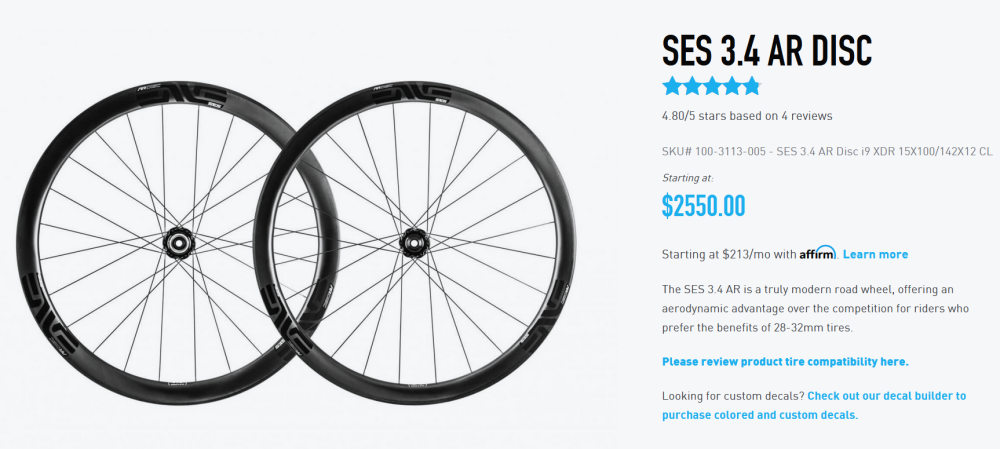Without knowing the grade of these climbs, it’s hard to know whether this is pure rider preference or an interesting nuance sussed out by In The Know Cycling’s approach to reviews (of which I am a fan). I’m going to guess, based on some of the hints in the article, that Nate is a larger rider with a higher absolute FTP. If that’s the case, then it totally makes sense that the cost/benefit of a heavier, more aerodynamic wheelset would be preferable in most scenarios; especially when it possible to carry speed into a relatively short effort.
If we flipped the scenario, to one that’s no longer about momentum, by increasing the duration and grade of the climb, would the results be the same? I suspect not. When the grade and duration creep upwards, each pedal stroke becomes an acceleration, more than an exercise in maintenance. Obviously, less so the fitter the rider, but the impact is still there.
All that said, $2,550. Wow! You can probably find them cheaper, but I didn’t in a quick search. Unless you go used, and then the best price I saw (albeit only put in about 2 minutes), was $1,800… Personally, I think I’ll stick with my Farsports 35s.
Aerodynamics also plays a role in climbing, once thought to be only a battle of grams. For Nate, a very accomplished climber using a very aero frame, he felt no difference on steep, 2-4 minute climbs between the light ENVE 3.4 AR disc wheelset and his roughly 25mm deeper, 200g heavier Roval CLX 64 aero wheels. On punchy climbs less than 30 seconds, the aero wheels seemed quicker for him, perhaps due to the aero benefit he carried into those climbs.

